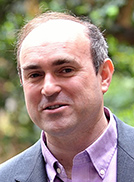Depth of response is associated with a longer duration of response and a longer progression-free survival in the phase III TOURMALINE-MM1 trial
During ASH 2016, an analysis was presented assessing the long-term outcomes by time to best response and depth of response in TOURMALINE-MM1, a randomized, double-blind, placebo-controlled, phase 3 study comparing ixazomib-lenalidomide-dexamethasone (IRd) with placebo-Rd in patients with relapsed-refractory multiple myeloma (RRMM). This analysis revealed that the depth of response was strongly associated with the progression-free survival (PFS) and duration of response DoR, with patients achieving a complete response (CR) or a stringent CR (sCR) having the longest DoR. The higher rate of objective response (ORR) and CR seen with IRd in this trial is likely the driver for the previously described superior PFS with IRd. Interestingly, a late response did not appear detrimental to overall outcomes. On the contrary, patients achieving a late best response had longer a PFS and DoR than patients achieving an early best response. Notably, the longer duration of therapy needed to achieve best response in late responders did not appear to be associated with additional toxicity burden.
Depth of response has been associated in multiple studies with improved PFS and overall survival. As a result, clinicians are often encouraged by a rapid decrease of M-protein when treatment is initiated. However, little is known about the association of response kinetics with outcomes. Some evidence suggests that early responders may have compromised long-term outcomes compared with slow responders. However, these studies were performed in the era prior to the availability of novel MM agents. The presented analysis assessed the long-term outcomes by time to best response and depth of response in TOURMALINE-MM1.
As reported earlier, the TOURMALINE-MM1 study met its primary endpoint at the first prespecified analysis with a 36% improvement in PFS in the IRd group (median PFS 20.6 months with IRd vs. 14.7 months with placebo-Rd; HR[95%CI]:=0.74[0.59–0.94], p=0.01). In addition to this, the ORR was higher in the IRd arm (78.3% vs. 71.5%, p=0.04) and more patients achieved a CR (11.7% vs. 6.6%, p=0.02) and at least a very good partial response (VGPR) (48.1% vs. 39.0%, p=0.01) when they were treated with IRd. The median time to first response was 1.1 months with IRd and 1.9 months with placebo-Rd (p=0.009), while the median time to best response was 2.3 vs. 2.6 months, respectively.
At data cut-off for this analysis, 676 patients pooled across the IRd and placebo-Rd arms had an IRC-assessed best confirmed response, including 2% sCR, 11% CR, 38% VGPR, 30% partial response (PR), 13% stable disease (SD), and 6% progressive disease (PD). In slide 1 attached to this abstract, the PFS is depicted in function of the depth of response, regardless of the treatment. The depth of response was associated with a longer DoR in both treatment arms (slide 2). Of note, compared to the placebo arm, more patients in the IRd arm achieved at least a VGPR (116 vs. 136).
The time to the best confirmed response was 0–4 months (‘early’) or >4 months (‘late’) in 174 (61%) and 109 (39%) patients, respectively, in the IRd arm, and 159 (60%) and 106 (40%) patients in the placebo-Rd arm. There were no significant differences in baseline disease characteristics between early and late responders. Interestingly, in both the IRd and placebo-Rd arms, the median PFS was shown to be longer among late responders. As the achievement of a deeper response may take longer and thus the category of late responders could be enriched for patients with a deeper response, sensitivity analyses of PFS in early versus late responders were conducted for subgroups of patients achieving a PR, or a VGPR, using landmarks of 6 and 9 months, respectively. Both analyses showed that late responders have longer PFS than early responders in both treatment arms. Of note, achievement of late response after prolonged duration of therapy did not appear to affect the safety profile of IRd or placebo-Rd.
In summary, in this analysis, the depth of response was strongly associated with PFS and DoR, with patients achieving CR or sCR having the longest DoR. The fact that patients in the IRd arm have higher rates of ORR, VGPR, and CR compared to the placebo-Rd arm is likely the driver for the superior PFS demonstrated with IRd. A late response did not appear to be detrimental to overall outcomes. On the contrary, patients achieving a late best response had longer PFS and DoR than patients achieving an early best response. As such, the investigators concluded that premature discontinuation of therapy due to ‘slow response’ should be avoided, and patients should be encouraged to stay on treatment until disease progression.
Reference
Garderet L, Laubach J, Stoppa A-M et al. Longer Time to Best Response and Depth of Response Are Associated with Improved Duration of Best Achieved Response and Progression-Free Survival (PFS): Post-Hoc Analysis of Phase 3 Tourmaline-MM1 Trial in Relapsed/Refractory Multiple Myeloma (RRMM). Presented at ASH 2016; Abstract 2134.


